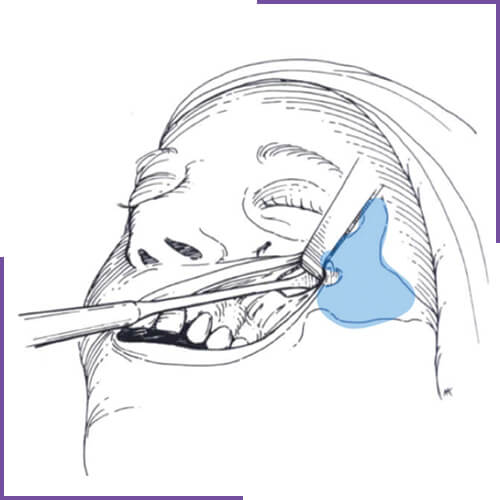WHAT ARE THE FACIAL IMPLANTS?
The bone structure of the face is of great importance in having proportional facial contours that evoke a sense of beauty. When evaluating the aesthetic proportions of the face, the proportions in the forehead, nose, cheekbones and jaw areas are always evaluated. The bone structure of a beautiful face should also be in compatible with facial proportions. In the front and side view of the face, the most prominent characteristic is the nose, along with the cheekbones (malar bones) and protrusion of the jawbone.
Facial implants are used successfully to correct skeletal deficiencies and asymmetries, especially in the cheekbone and jaw areas, and to contour face shape.
In the past, while these surgeries were performed with bones and cartilage taken from the patient’s own body, repair is preferred with preshaped implants without damaging any other part of the body with today’s technology. Implant materials are produced after long and meticulous research, planned to last lifetime with the patient and it is easily removed when not desired. Medpor and hard silicone implants are used seamlessly in various sizes and shapes.
Jaw implants: When evaluating jaw and jaw tip problems, the closing of teeth is also controlled. If the teeth do not close smoothly, firstly orthodontic treatment followed by orthognathic surgery to correct the jawbone and closure are recommended if necessary. If there is no problem with tooth closure, if it is only the tip of the jaw and/or the side of the jaw, suitable implants for these areas are selected.
Cheekbone implants: When evaluating the cheekbone, upper jaw development is examined. If the problem is only the size and position of the cheekbone, malar implant is in question. If there is a general inadequacy in the development of the upper jaw and a defect in tooth closure, orthognathic surgery may be on the agenda. In mild deficiencies of the cheekbone and mid-face region, fat injections can be planned. When more specific and shaped application are requested, malaria applications are very effective. They are usually placed through the mouth. The operation lasts up to 1 hour and severe pain and discomfort is not expected. Recovery is fast. Implants, though rare, are likely to cause displacement or reactions. The need to plan a new surgical intervention may arise.
WHAT ARE THE STEPS FOR APPLICATION ?
Usually, a small incision inside the mouth is opened in order to create the special pocket into which the prostheses will be placed. The prosthesis is selected and placed in the desired size and shape. Depending on the condition of the created pocket, the implant is sometimes mounted with small screws and its movement is blocked. Apart from the jaw tip, implants are also available designed to expand the side edge of the jaw. Their use is like jaw tip prostheses. The procedure for prosthetic placement is often performed under general anesthesia. The surgery takes about an hour. After the operation, the jaw is fixed with tapes and taken back 3-4 days later. In the early days, you should start with soft food, avoid hard foods and gargle frequently. Sensitivity in the first days, swelling, numbness in the lower lip may be, then recovers quickly. In rare cases, infection in the early period, if not detected in the late period, displacement of the prosthesis may be encountered problems.





